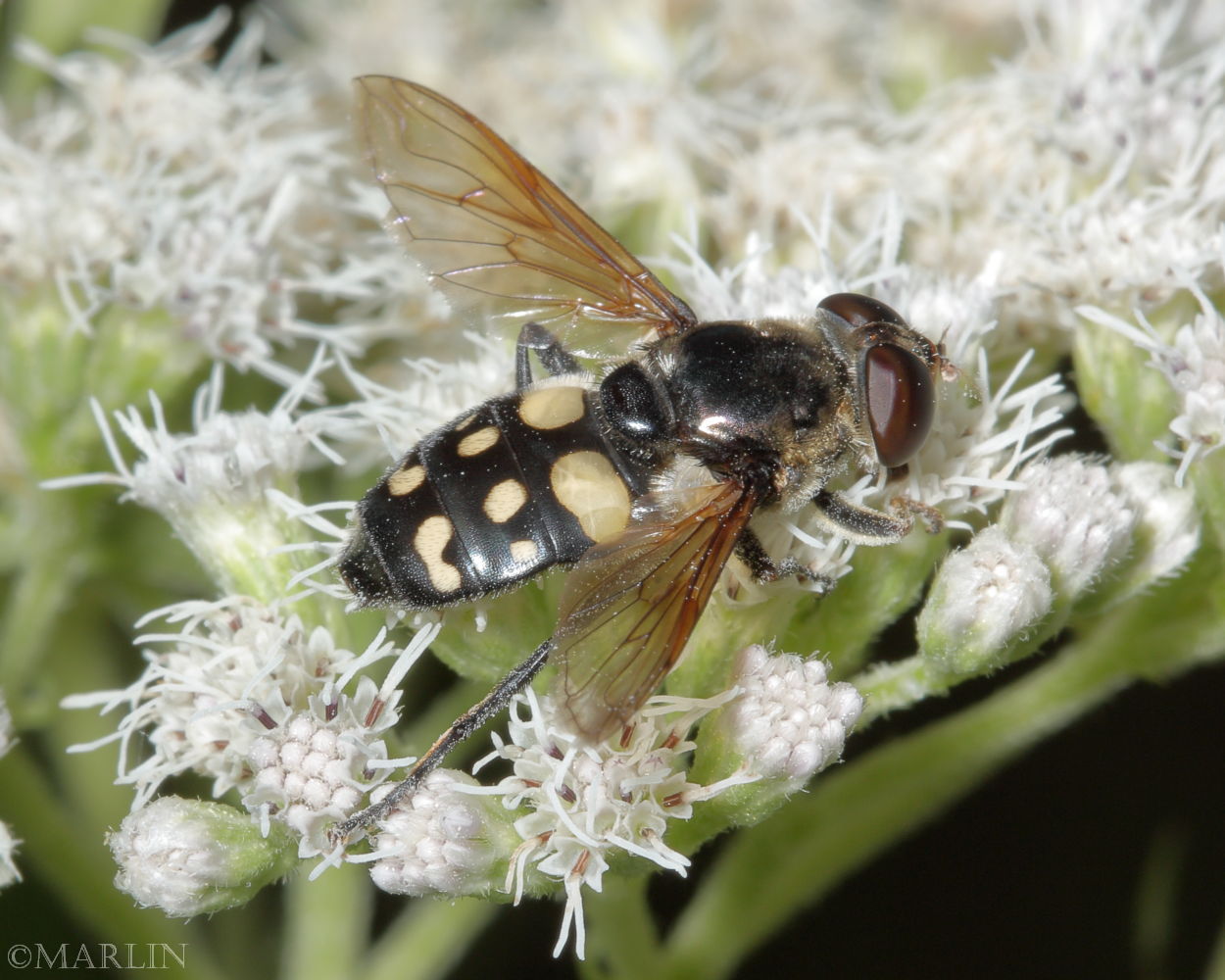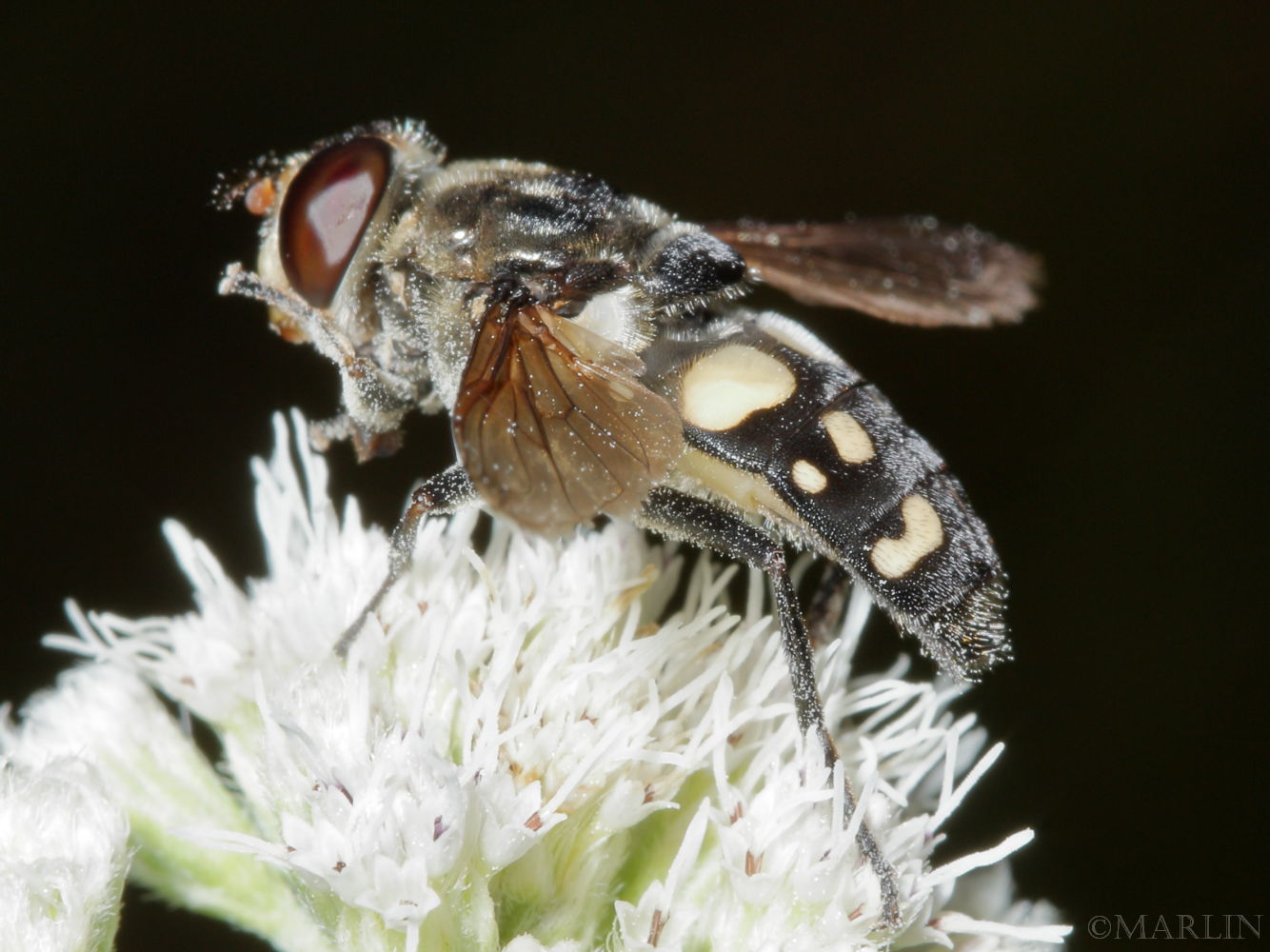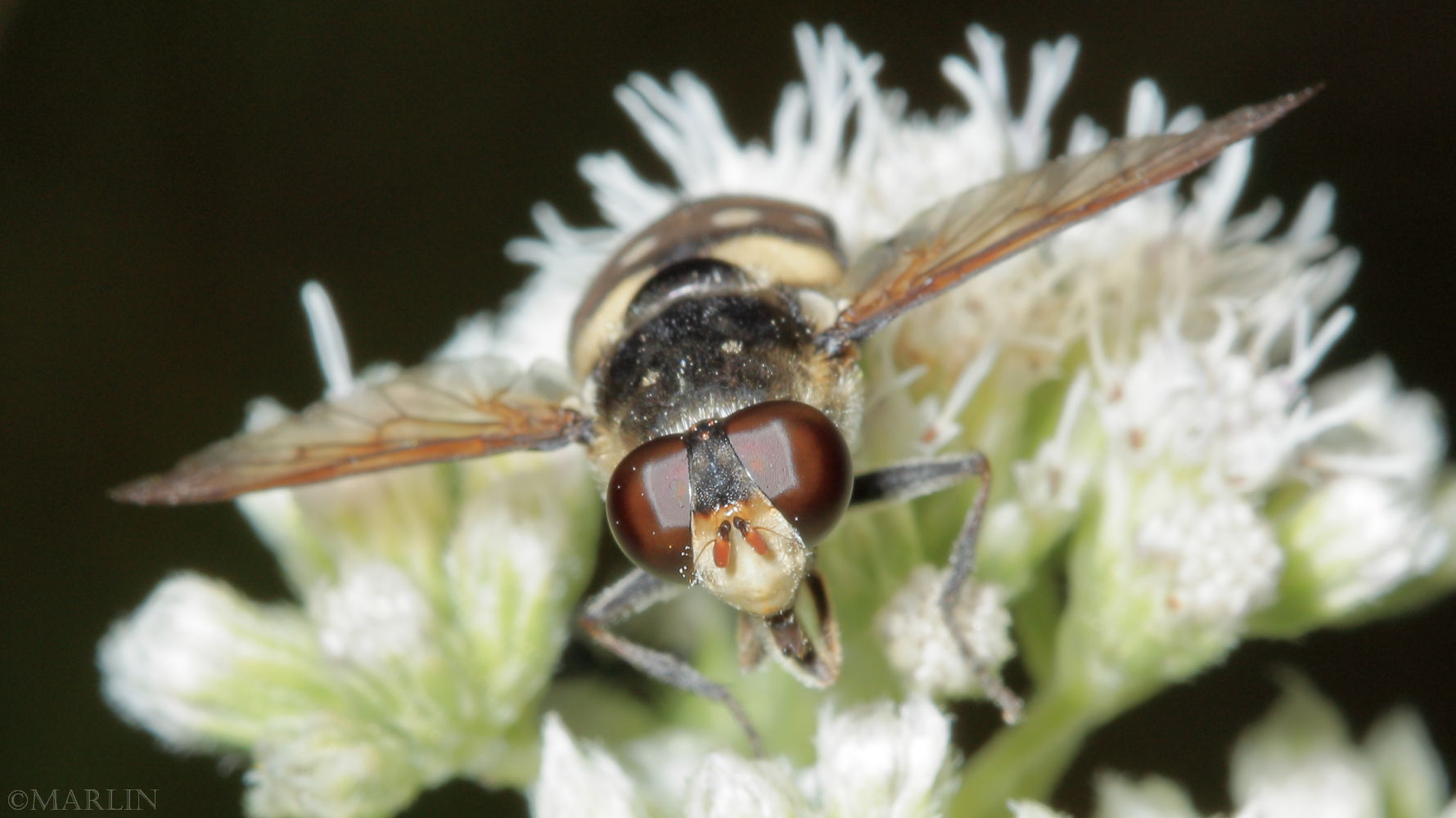Syrphid Fly – Sericomyia lata
Live adult Syrphid fly photographed in the wild at Marienville, Pennsylvania.
The family Syrphidae, commonly known as hoverflies or flower flies, plays a crucial role in agricultural ecosystems by serving as efficient predators of aphids. Aphids are notorious agricultural pests that can cause significant damage to crops, making their control essential for ensuring food security and reducing the need for chemical pesticides.
Syrphidae adults and larvae both contribute to aphid predation. Adult hoverflies primarily feed on nectar and pollen, but they also play a role in aphid control by laying eggs near aphid-infested plants. Once the hoverfly larvae hatch, they become voracious aphid predators.
Hoverfly larvae have several remarkable features that make them effective aphid predators:
- Mimicry: Syrphidae larvae often resemble aphids, mimicking their appearance to blend in with the pest population. This mimicry allows them to get close to aphids without raising suspicion.
- Suction-Feeding: Hoverfly larvae use specialized mouthparts to pierce and suck the bodily fluids of aphids, effectively incapacitating and consuming them.
- High Consumption Rates: A single hoverfly larva can consume a substantial number of aphids during its development. Their high appetite for aphids helps control aphid populations effectively.




